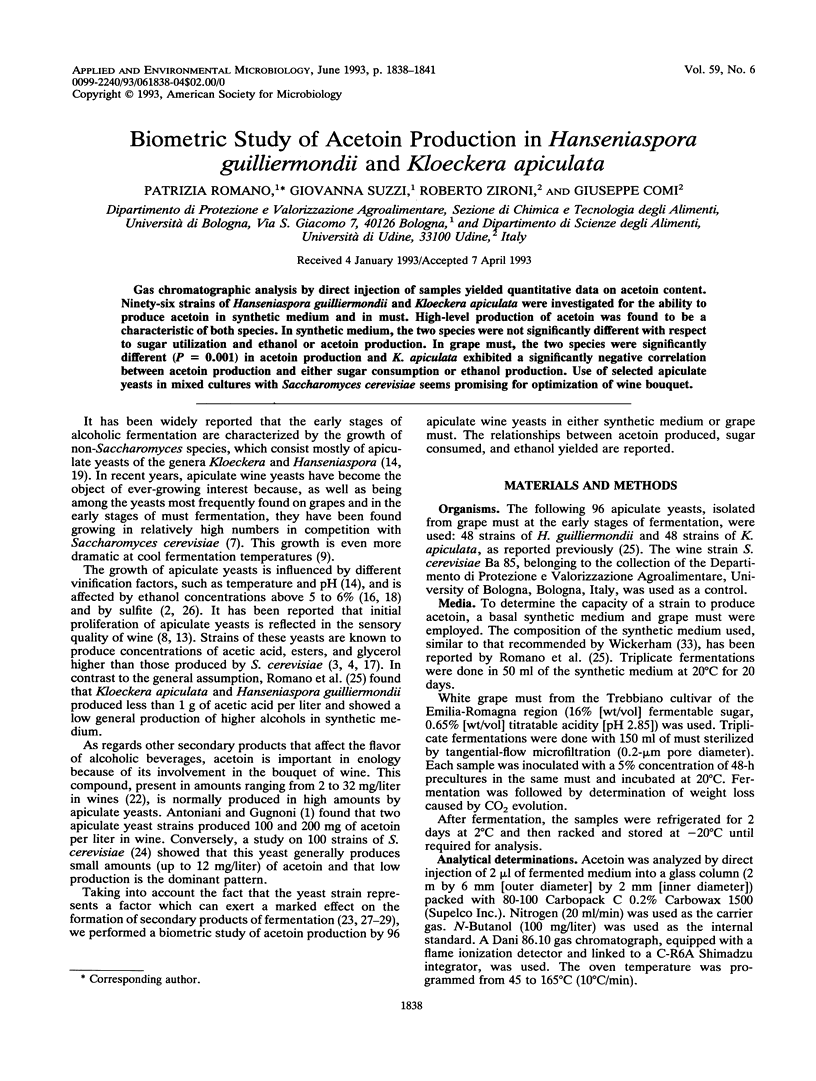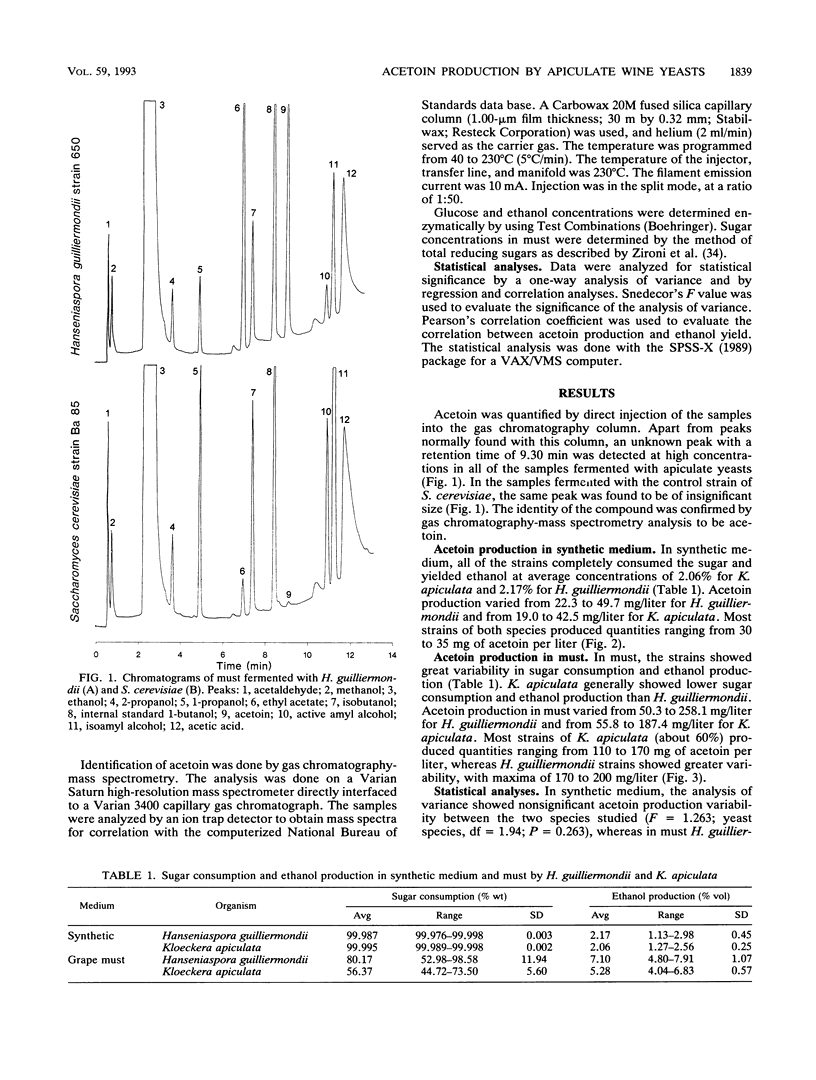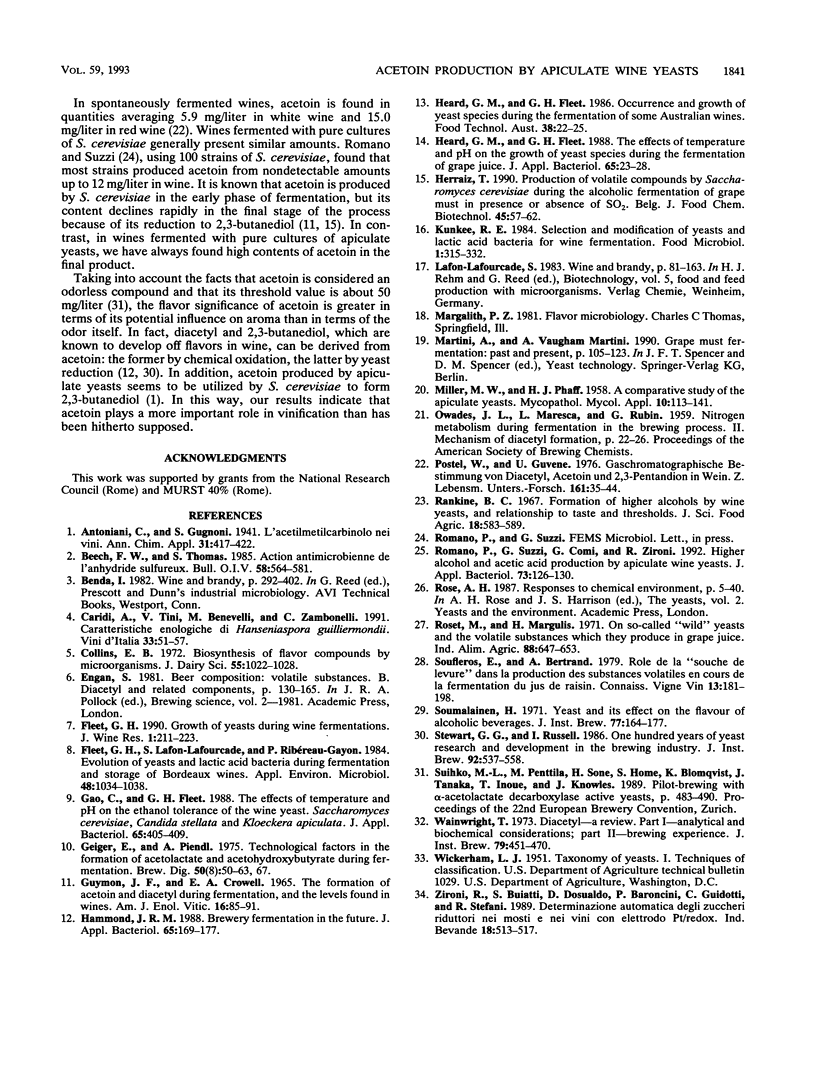Abstract
Gas chromatographic analysis by direct injection of samples yielded quantitative data on acetoin content. Ninety-six strains of Hanseniaspora guilliermondii and Kloeckera apiculata were investigated for the ability to produce acetoin in synthetic medium and in must. High-level production of acetoin was found to be a characteristic of both species. In synthetic medium, the two species were not significantly different with respect to sugar utilization and ethanol or acetoin production. In grape must, the two species were significantly different (P = 0.001) in acetoin production and K. apiculata exhibited a significantly negative correlation between acetoin production and either sugar consumption or ethanol production. Use of selected apiculate yeasts in mixed cultures with Saccharomyces cerevisiae seems promising for optimization of wine bouquet.
Full text
PDF



Selected References
These references are in PubMed. This may not be the complete list of references from this article.
- Fleet G. H., Lafon-Lafourcade S., Ribéreau-Gayon P. Evolution of yeasts and lactic Acid bacteria during fermentation and storage of bordeaux wines. Appl Environ Microbiol. 1984 Nov;48(5):1034–1038. doi: 10.1128/aem.48.5.1034-1038.1984. [DOI] [PMC free article] [PubMed] [Google Scholar]
- MILLER M. W., PHAFF H. J. A comparative study of the apiculate yeasts. Mycopathol Mycol Appl. 1958 Dec 30;10(2):113–141. doi: 10.1007/BF02055037. [DOI] [PubMed] [Google Scholar]
- Postel W., Güvenc U. Gaschromatographische Bestimmung von Diacetyl, Acetoin und 2,3-Pentandion in Wein. Z Lebensm Unters Forsch. 1976;161(1):35–44. doi: 10.1007/BF01145418. [DOI] [PubMed] [Google Scholar]


